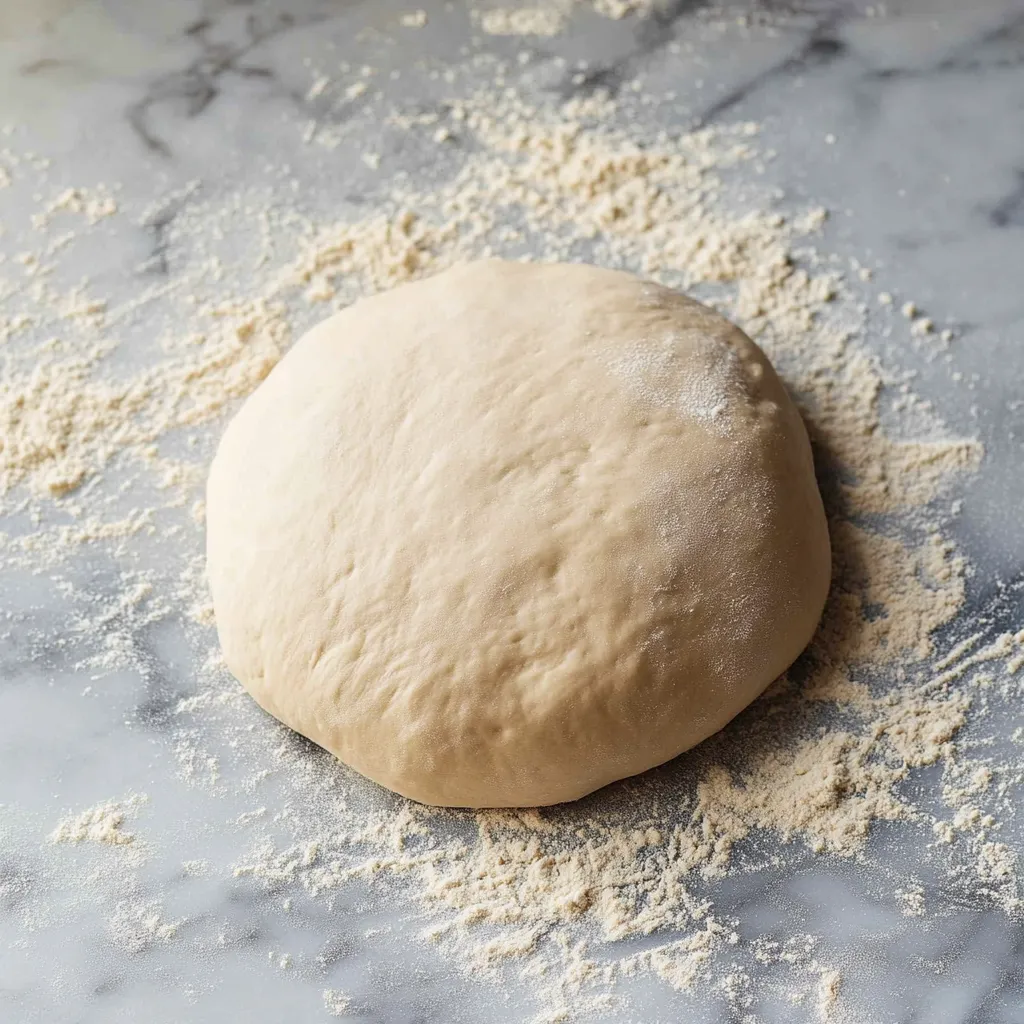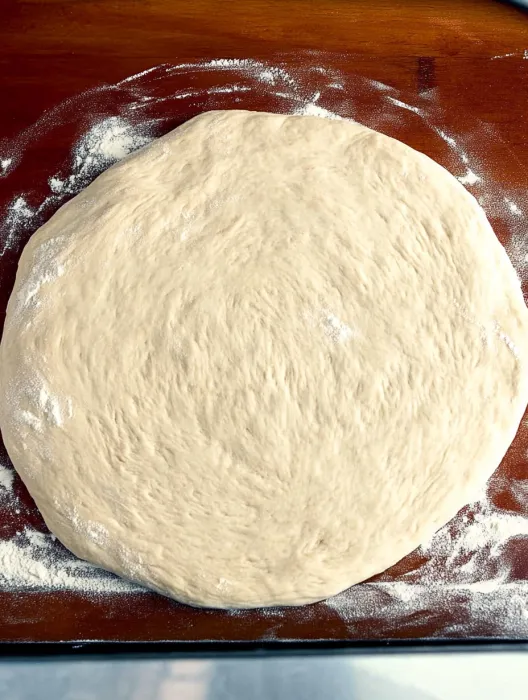 Save
Save
This authentic Neapolitan pizza dough recipe transforms simple ingredients into the most magical, airy crust that's become the cornerstone of my home pizza nights. After years of pizza experiments, I finally discovered this traditional method that delivers that distinctive char and tender center that defines true pizza Napoletana.
I first mastered this dough during a particularly harsh winter when I couldn't visit my favorite pizzeria. After extensive testing, my family now declares these homemade pizzas better than our local Italian restaurant's offerings.
Ingredients
- Italian Tipo 00 flour provides the silky texture and perfect chew that defines Neapolitan pizza. Look for authentic Italian brands for best results.
- Active dry yeast in minimal amounts allows for slow fermentation. This creates complex flavors rather than just making the dough rise.
- Room temperature water ensures proper hydration and yeast activation. Using filtered water makes a noticeable difference in flavor.
- Kosher salt enhances flavor development during fermentation. Diamond Crystal brand has the perfect crystal size for even distribution.
Step-by-Step Instructions
- Initial Mix
- Combine flour, yeast and water in a medium bowl until just incorporated. This gentle beginning prevents overworking the dough and allows the flour to properly hydrate during the 30-minute rest. The mixture will look shaggy at this stage which is exactly what you want.
- Salt Incorporation
- Sprinkle salt over the rested dough and knead until fully combined. This delayed salt addition prevents the salt from interfering with initial yeast activation while ensuring it distributes evenly throughout the dough matrix.
- Develop Gluten Structure
- Knead using the stretch and fold technique for 15-20 minutes until the dough becomes remarkably smooth and elastic. You'll notice a transformation as the dough begins to feel almost silky. The dough is ready when it springs back immediately when pressed with your finger and has a satiny appearance.
- Cold Fermentation
- Transfer to an oiled bowl and refrigerate for at least 24 hours, preferably up to 3 days. This slow, cold fermentation is the secret to developing complex flavors and perfect texture. The enzymes work slowly, breaking down starches and creating the signature Neapolitan flavor profile.
- Shape Dough Balls
- Divide the dough into four equal portions and shape each into a tight ball using gentle folding and rotating motions. This creates surface tension that helps the dough maintain its shape during the final rise while trapping air that creates those coveted bubbles.
- Final Rise
- Allow shaped dough balls to double in size at room temperature for about 2 hours. This final proof develops the airy structure that creates the light, digestible crust that Neapolitan pizza is famous for.
- Hand Stretching
- Stretch dough using your fingers and knuckles until it reaches about 12 inches in diameter. The gentle hand stretching preserves the air bubbles that create the distinctive leopard spotting and airy cornicione (outer rim) when baked.
- High Heat Baking
- Cook on a preheated pizza stone under the broiler for 4-8 minutes until the crust develops light char spots. The intense heat mimics traditional wood-fired ovens, creating rapid rise and those signature blistered bubbles in the crust.

The Tipo 00 flour completely transformed my pizza making. After trying countless flour brands, I discovered that authentic Italian Tipo 00 creates that magical combination of crispness and tenderness that defines great Neapolitan pizza. My family can actually taste the difference when I use the proper flour.
The Science Behind Cold Fermentation
The extended cold fermentation is not just tradition but science in action. During those 24-72 hours in the refrigerator, enzymes slowly break down complex starches into simpler sugars. This develops deeper flavor while also making the gluten network more extensible so the dough stretches without springing back. Additionally, beneficial bacteria produce organic acids that contribute to the distinctive sourdough-like complexity in traditional Neapolitan crusts.
Toppings The Neapolitan Way
Authentic Neapolitan pizza celebrates simplicity with minimal high-quality toppings. The classic Margherita features only San Marzano tomatoes, fresh mozzarella torn into pieces, fresh basil leaves, and a drizzle of excellent olive oil. Always apply toppings sparingly to prevent weighing down the delicate dough. This allows the crust to rise properly and ensures the toppings cook quickly alongside the dough during the brief baking time.
Troubleshooting Common Issues
If your dough feels too sticky during kneading, resist adding more flour immediately. Instead, let it rest for 5 minutes to allow further hydration, then continue kneading with lightly oiled hands. For difficulty stretching, your dough may be too cold allow it to warm up completely to room temperature before attempting to stretch. If the crust lacks char spots, make sure your stone has preheated thoroughly for at least 45 minutes and position it closer to the broiler.

Recipe FAQs
- → Why is the long refrigeration period necessary?
The 24-hour (up to 3-day) cold fermentation is crucial for developing complex flavors and improving texture. During this time, yeast works slowly, creating more nuanced flavors while gluten structures develop, resulting in a more elastic, workable dough with better chew and air pockets.
- → Can I use all-purpose flour instead of Tipo 00?
While Tipo 00 flour is traditional and gives the best texture due to its fine milling and protein content, bread flour makes a good substitute. All-purpose flour will work in a pinch but won't achieve the same tender-yet-chewy texture characteristic of authentic Neapolitan crust.
- → Why shouldn't I use a rolling pin?
Hand-stretching preserves the air bubbles developed during fermentation, creating that airy, light texture with a puffy edge (cornicione). Rolling pins crush these bubbles and compress the dough, resulting in a denser, cracker-like crust rather than the tender-chewy texture that defines Neapolitan style.
- → What if my oven doesn't reach 550°F?
Use the highest temperature your oven allows and preheat your pizza stone thoroughly (45+ minutes). The broiler helps compensate for lower temperatures by providing top heat. You won't get the same 90-second bake as wood-fired ovens, but preheating thoroughly and minimizing door opening helps maximize heat retention.
- → Why is my dough tearing when I stretch it?
Tearing typically indicates either insufficient gluten development (needs more kneading) or the dough is too cold and tight (needs more resting at room temperature). Ensure the dough has properly doubled in size before stretching, and handle it gently, letting gravity do most of the work when stretching.
- → Can I freeze the dough balls?
Yes, after dividing into balls, you can freeze them on a tray, then transfer to freezer bags once solid. Thaw in the refrigerator overnight, then allow 3-4 hours at room temperature to fully wake up the yeast and achieve proper texture before stretching and baking.
